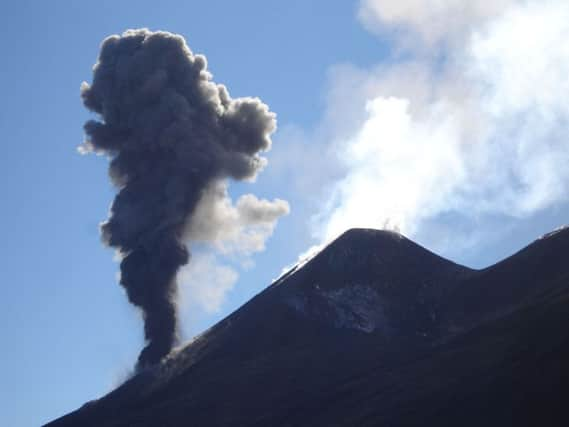Dr John Murray: How Scotland's extinct volcanoes help us understand today's eruptions


The findings of this research have attracted global media interest, but a mostly untold story is how Ardnamurchan, the 50 square mile peninsula on the west coast of Scotland, has contributed to the study of volcanoes across the world.
In 2018, my colleagues and I demonstrated that Mount Etna, a 25-mile wide volcano, was creeping slowly downwards towards the sea, at an average rate of 14mm per year. It is also expanding in all directions width-ways, by a greater amount.
Advertisement
Hide AdAdvertisement
Hide AdThe creep that we measured was not during major eruptions, when much larger movements take place and complicate the picture, but in comparatively calm periods in between eruptions.


The volcano’s width also expanded during these quiet periods, each side of the volcano moving about 40mm per year away from the summit. This expansion was assumed by most volcanologists to be caused by magma rising within the volcano into a magma chamber, causing it to expand and push the sides of the volcano outward.
Such magma chambers were first seen and recognised inside the ancient volcanoes of Scotland, today worn down and dissected by tens of millions of years of rain and four major ice ages.
The Ardnamurchan peninsula in Lochaber is entirely composed of the inside of a volcano. It was one of the key areas where the Scottish geologist Ernest Anderson developed his meticulous work on the detailed mechanics of what took place inside volcanoes.
His research, carried out between 1905 and the late 1940s, forms the basis of much of what we understand about the physics of active volcanoes today.
Among Anderson’s legacies is the 1958 Mogi model. This was the model my colleagues and I have used to determine the depth of the magma chamber within a volcano. Ardnamurchan and Scotland’s other extinct volcanoes still help us understand active volcanoes around the world, whether Mount Etna in Sicily, Mount St Helens in the USA or Lascar in Chile.
Another critical chapter in the Etna story was the publication last month of further research on the downslope movement of Etna’s seaward side. A team of German geologists had planted five signal devices on Etna’s seaward side 4000 feet below sea level and eight miles from the shore. They found that even at this distance, between 2016-17, Etna’s sides still moved outward 40mm.
There were some surprises: all the movement took place in one eight-day period, and there were no associated earthquakes. The movement was also greater at this distance than anywhere nearer the top of the volcano. All the movement took place at one geological fault, whereas on land it was distributed between two fault systems.
Advertisement
Hide AdAdvertisement
Hide AdThese last two observations suggest that the downslope movement started beneath the sea, far from the summit, and then took the onshore parts of the volcano with it. So it was not caused by the expansion of a magma chamber, but by the effects of gravity.
This ties in with another idea that was developed by Italian volcanologist Andrea Borgia in the 1990s. The increasing load of lavas and ashes deposited at the top of the volcano by eruption causes the summit of Etna to sag and the sides to spread outward after eruption, a process known as gravitational spreading. Certainly this is an idea that I have favoured in the case of Etna and similar volcanoes, for summit subsidence is nearly always accompanied by outward movement of the sides.
Regarding the dangers from sliding volcanoes such as Etna, it is well-established from geological evidence that other volcanoes that have slid downslope have experienced catastrophic collapse on the downslope side later in their history. At present our knowledge of the precursors to such disastrous events is very basic, making meaningful predictions impossible.
We can look to the past for clues, to extinct volcanoes and their remnants, to peninsulas like Ardnamurchan, but much more research is required. In the meantime, residents near Scotland’s volcanic relics have no need to fear – we haven’t had an active volcano here for the past 40 million years.
There is a range of free learning about volcanoes on The Open University’s website OpenLearn: www.open.edu/openlearn
Dr John Murray is a volcanologist and a senior research fellow in the School of Environment, Earth and Ecosystem Sciences at The Open University. As well as being devoted to studying Mount Etna he is a co-investigator on the High Resolution Stereo Camera experiment on board the current European Space Agency Mars Express mission.